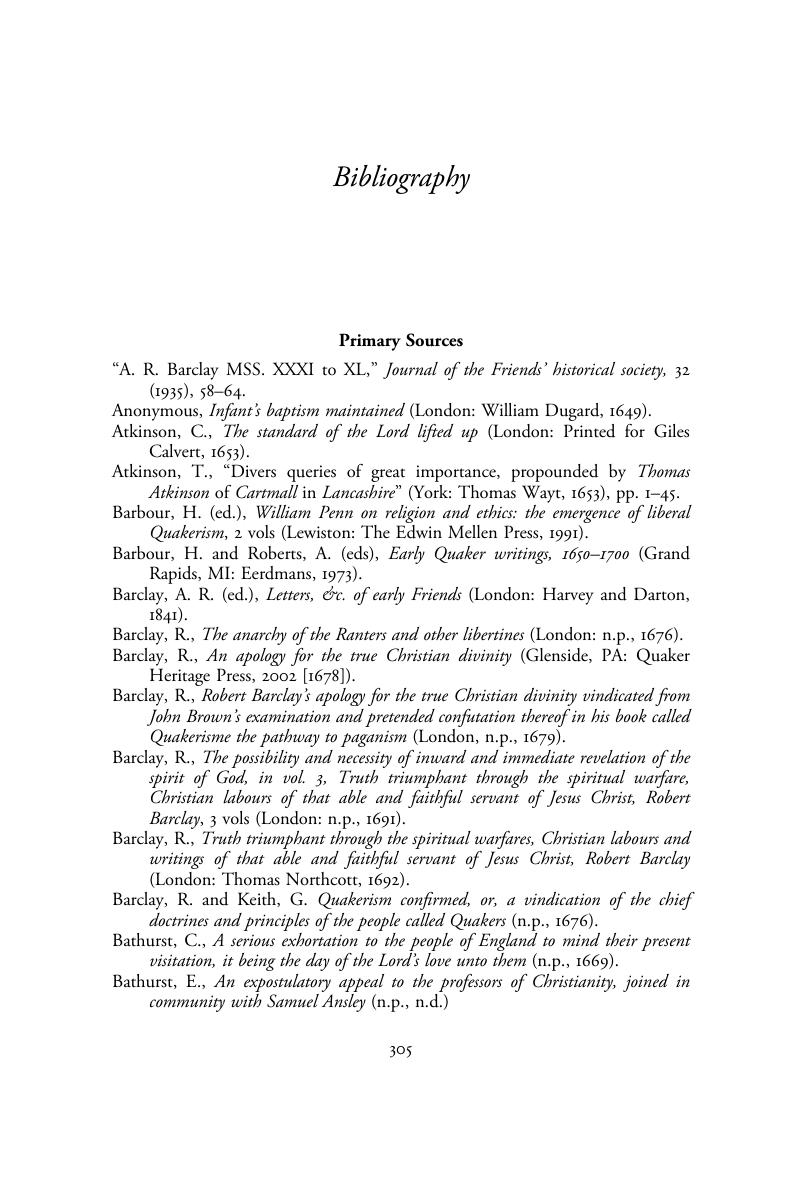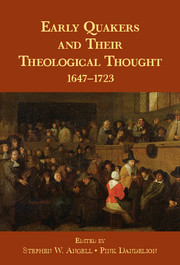Book contents
- Half title page
- Title page
- Copyright page
- Contents
- Contributors
- Chronology
- Introduction
- Chapter 1 Seventeenth-Century Context and Quaker Beginnings
- Chapter 2 Quakers and the Printing Press
- Chapter 3 Unity and Universality in the Theology of George Fox
- Chapter 4 The Man Who “Set Himself as a Sign”
- Chapter 5 The Witness of Richard Farnworth
- Chapter 6 Margaret Fell and the Second Coming of Christ
- Chapter 7 “Outcasts of Israel”
- Chapter 8 Renegade Oxonian
- Chapter 9 “That You May Be Perfect in Love”
- Chapter 10 The Conventionality of the Notorious John Perrot
- Chapter 11 Felt Reality in Practical Living and Innovative Thinking
- Chapter 12 Robert Barclay
- Chapter 13 Elizabeth Bathurst
- Chapter 14 William Penn's Contributions to Early Quaker Thought
- Chapter 15 Immediate Revelation, Kabbalah, and Magic
- Chapter 16 From Apocalyptic Prophecy to Tolerable Faithfulness
- Afterword
- Bibliography
- Index
- References
Bibliography
Published online by Cambridge University Press: 05 August 2015
- Half title page
- Title page
- Copyright page
- Contents
- Contributors
- Chronology
- Introduction
- Chapter 1 Seventeenth-Century Context and Quaker Beginnings
- Chapter 2 Quakers and the Printing Press
- Chapter 3 Unity and Universality in the Theology of George Fox
- Chapter 4 The Man Who “Set Himself as a Sign”
- Chapter 5 The Witness of Richard Farnworth
- Chapter 6 Margaret Fell and the Second Coming of Christ
- Chapter 7 “Outcasts of Israel”
- Chapter 8 Renegade Oxonian
- Chapter 9 “That You May Be Perfect in Love”
- Chapter 10 The Conventionality of the Notorious John Perrot
- Chapter 11 Felt Reality in Practical Living and Innovative Thinking
- Chapter 12 Robert Barclay
- Chapter 13 Elizabeth Bathurst
- Chapter 14 William Penn's Contributions to Early Quaker Thought
- Chapter 15 Immediate Revelation, Kabbalah, and Magic
- Chapter 16 From Apocalyptic Prophecy to Tolerable Faithfulness
- Afterword
- Bibliography
- Index
- References
Summary

- Type
- Chapter
- Information
- Early Quakers and Their Theological Thought1647–1723, pp. 305 - 332Publisher: Cambridge University PressPrint publication year: 2015



